
SD cards are widely-used to provide extended storage on mobile devices and digital cameras. They may contain irreplaceable images that hold great sentimental value for the user.
Unfortunately, the images or other files on an SD card can suddenly disappear or get inadvertently deleted. This can result in a lot of stress and despair if important data was on the card. In this article, we will discuss the best ways to recover deleted files from an SD card.
Is It Possible to Recover Deleted Files from an SD Card?
The simple answer is yes. With the right tools and methods, it is possible to recover deleted files from an SD card. This is because when you delete a file from your SD card, it will not get permanently deleted right away.
Instead, your file system marks the space previously occupied by your deleted files as “available”. This means that the actual data in your files remains intact on your SD card unless it is overwritten by new data.
The recoverability of your files still depends on numerous factors, including how long ago your files were deleted and how much data was already overwritten.
Here are some of the things that you can do to increase the chances of a successful file recovery:
- ⚠️ Avoid writing files to your SD card to avoid overwriting data. If possible, turn on the read-only mode on your card.
- ⏱️ Perform data recovery as soon as you can.
- 🔍 Use trustworthy and reliable data recovery software. Research the best tool for your data recovery needs.
- 💾 Save your recovered files to a different location than the one you are trying to recover data from.
How to Recover Files from SD Cards
Recovering your files from your SD card can be an easy process. In this section, we will give you simple and proven methods to retrieve your files from your card.
On Windows
Data recovery software offers a viable method with which to recover deleted files from an SD card. For example, Disk Drill Memory Card Recovery is the right tool for recovering deleted data from an SD card. It can recover your lost files with a few clicks.
Follow these steps to recover files on Windows computers using Disk Drill data recovery software:
- Download and install Disk Drill for Windows on your machine. Since you are recovering data from an SD card, you can use your computer’s main hard drive for the download and installation.
- Connect the SD card to the machine through an internal or external card reader.
- Launch Disk Drill and choose the SD card from the app’s disk list. Click the Search for lost data button to initiate the scan.
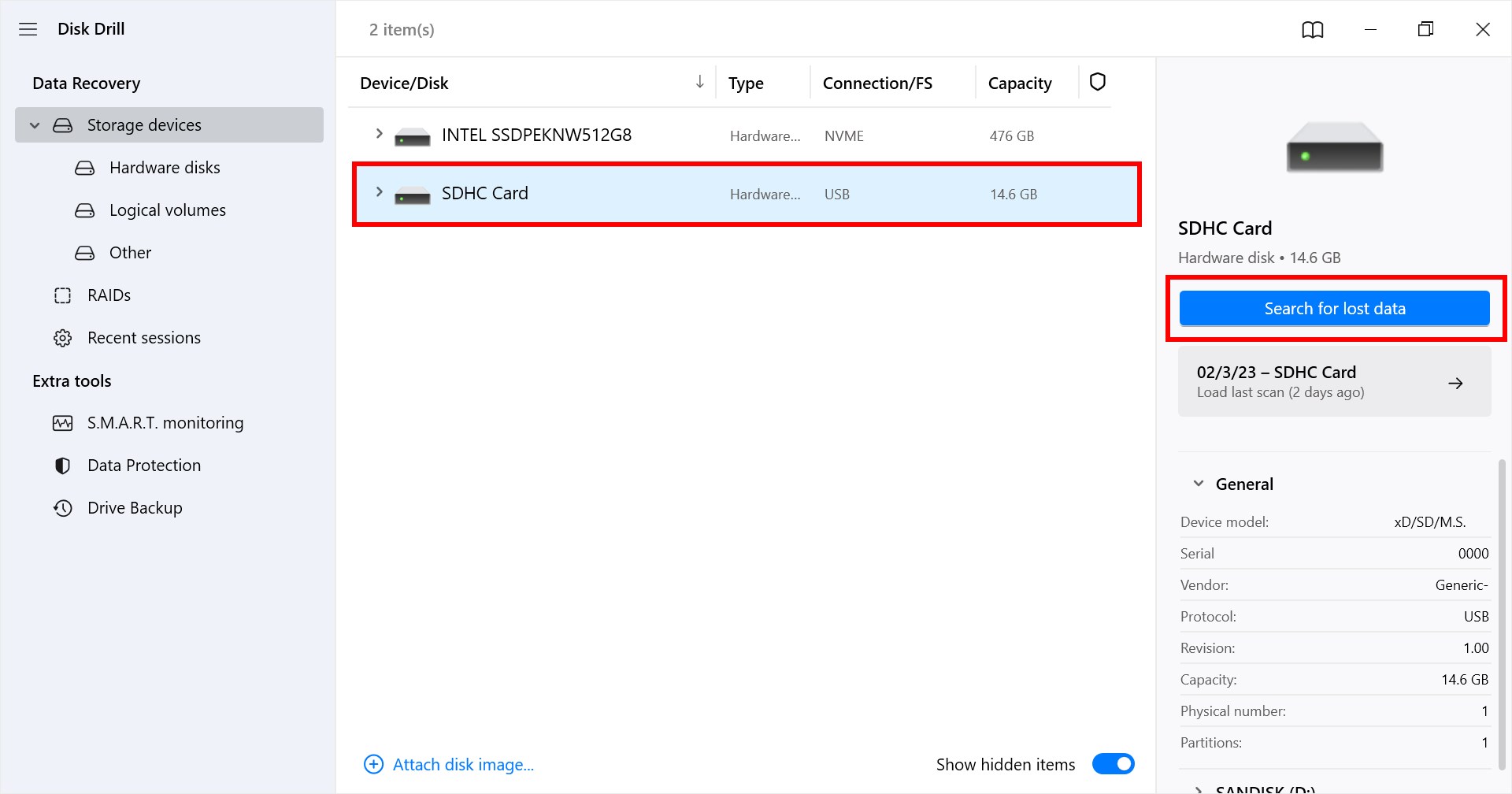
- Preview the found files which are categorized as Pictures, Video, Audio, Documents, Archives, and Other files so you can quickly navigate to the type of file in which you are interested.
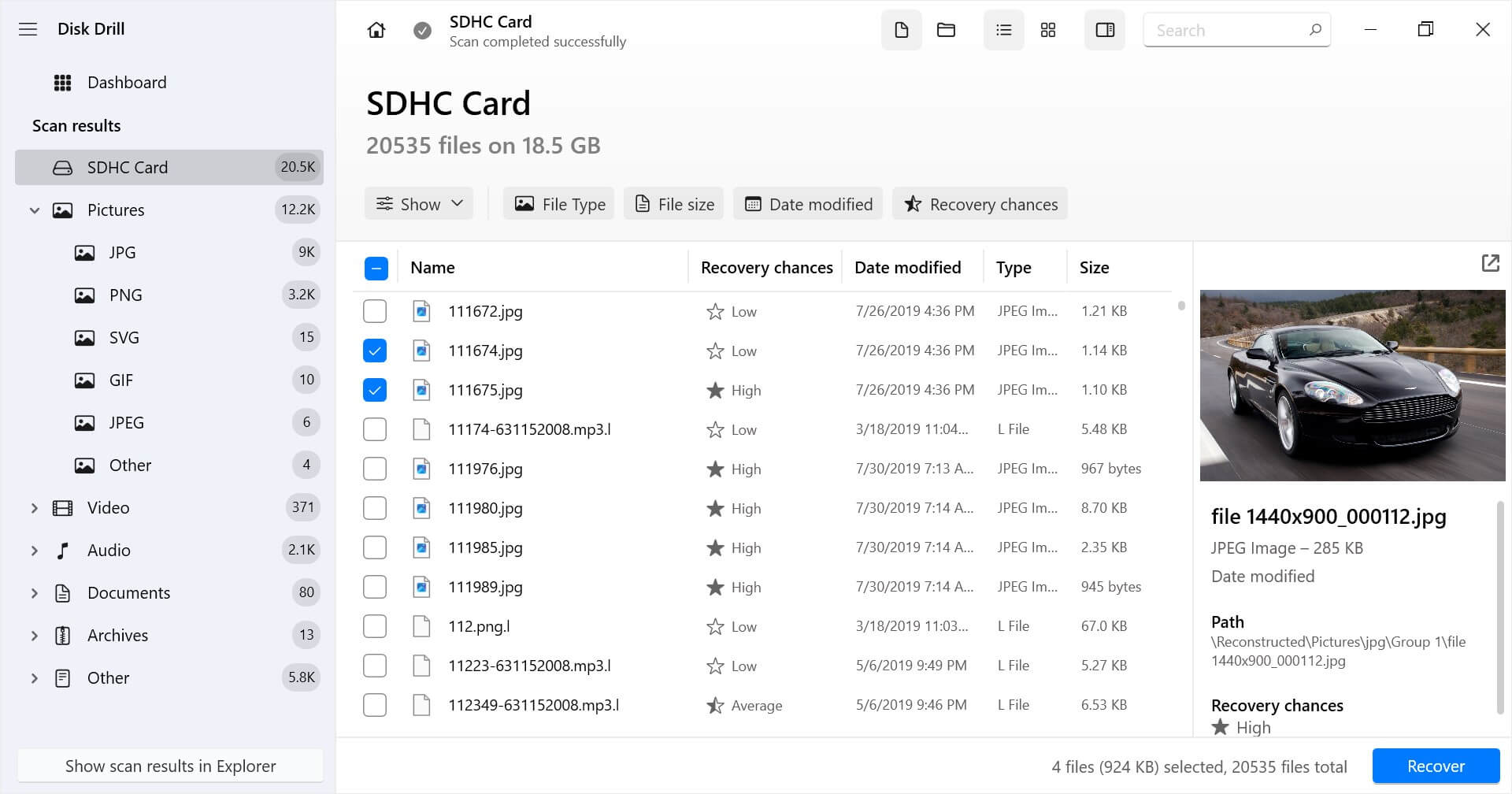
- Select the files you want to recover and choose a safe location at which to store the recovered data that is not on the affected SD card. This prevents data corruption or overwriting during the recovery process.
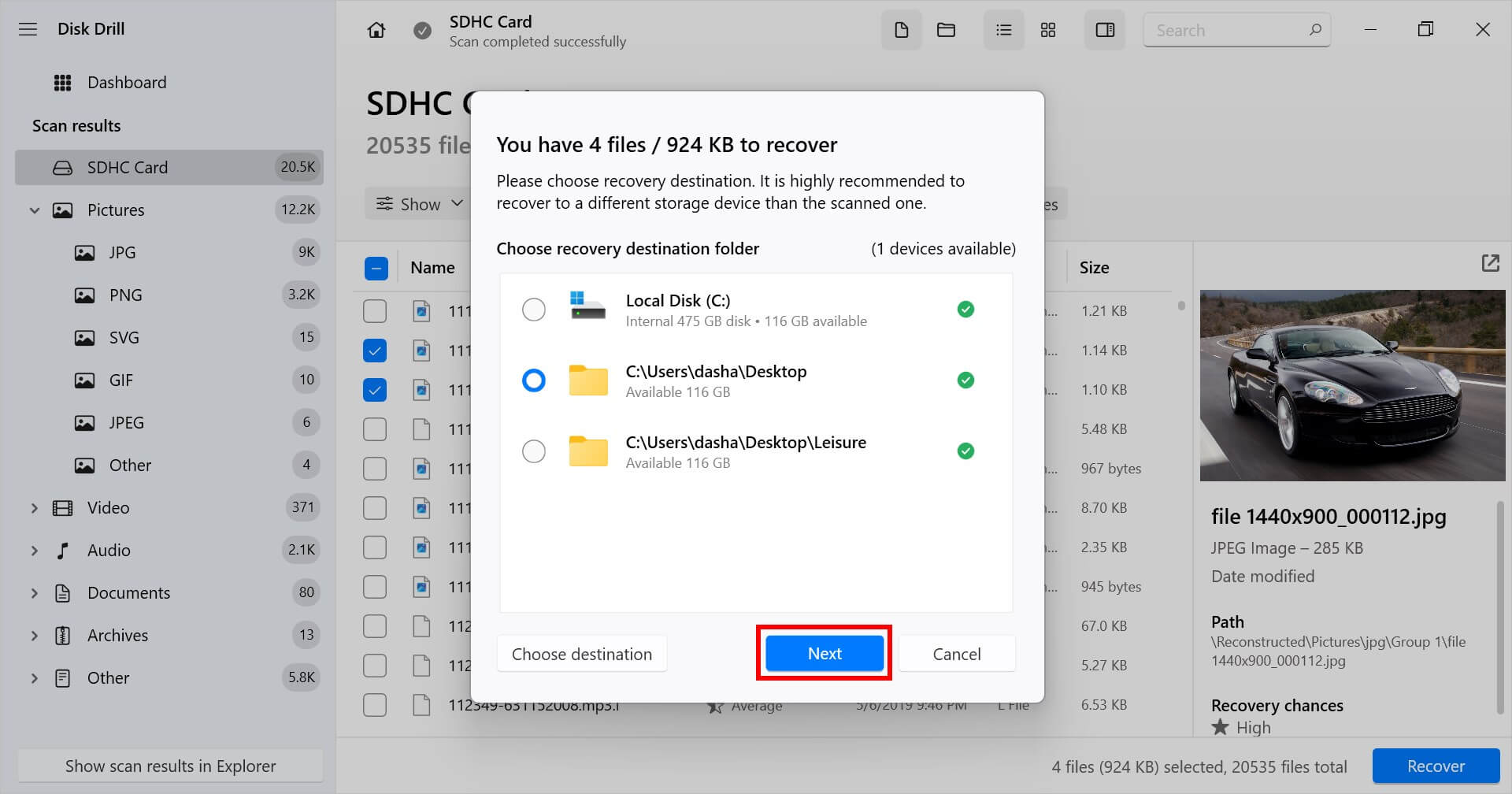
- Click the Next button and let the software retrieve your files to the designated storage location.
On a Mac Computer
Use the following procedure to recover deleted files on a Mac with Disk Drill data recovery software:
- Download and install Disk Drill for Mac. It’s safe to perform the download and installation on your Mac’s main disk since you are recovering data from an external storage device.
- Connect the SD card that has lost data to your Mac with a card reader or by attaching the camera or device that contains the card.
- Launch Disk Drill and choose Data Recovery from the panel on the left. Select the SD card that you will be recovering from the list of available devices.
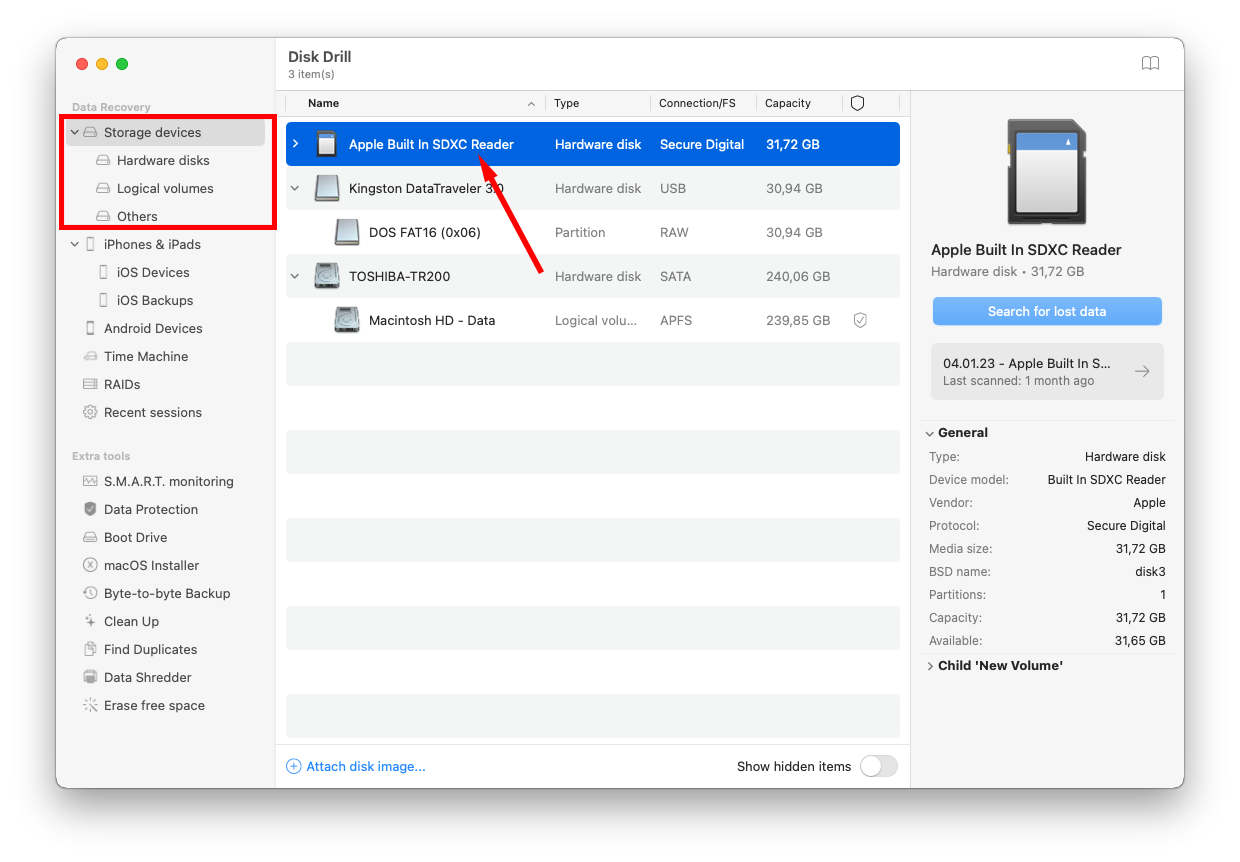
- Click the Search for lost data button to initiate the scanning procedure. By default the tool will use all of its algorithms in the optimal order which will provide the most complete recovery results.
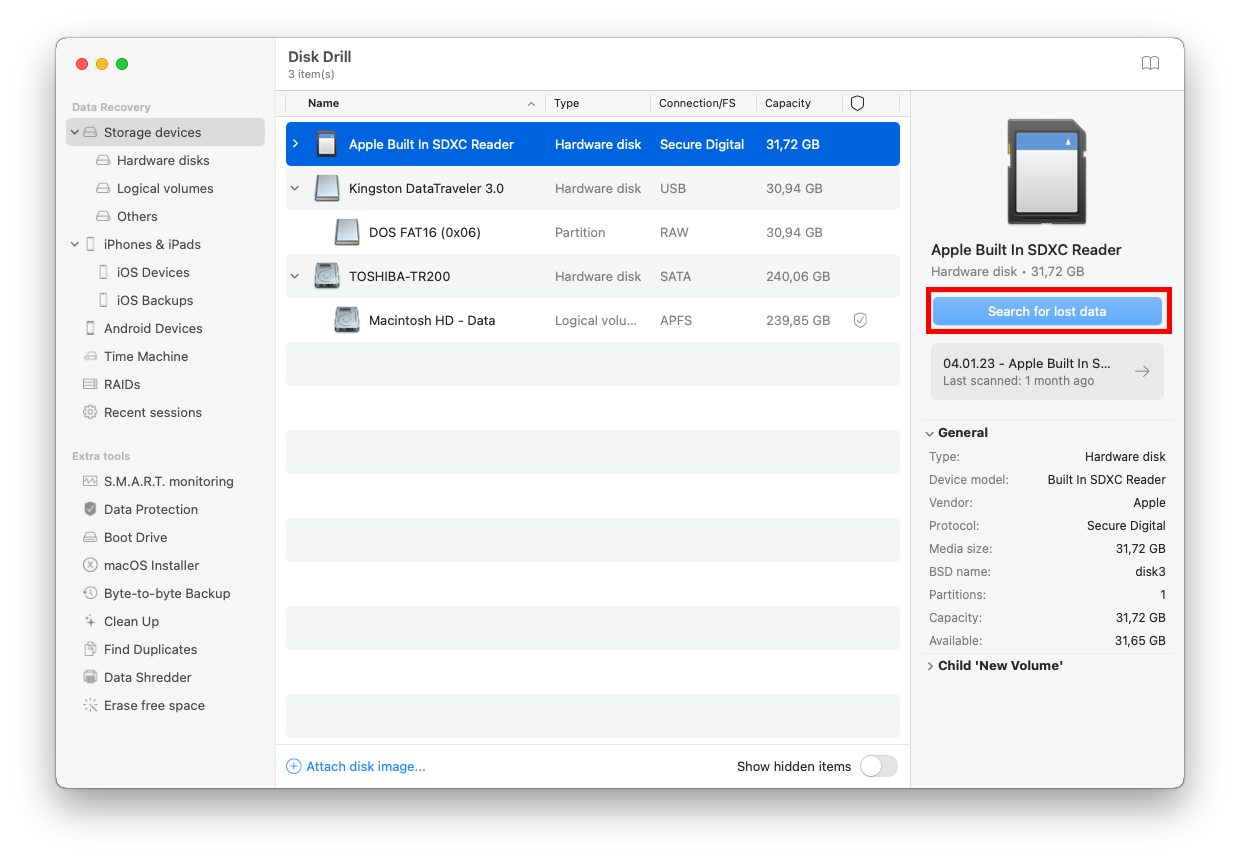
- Preview the files found by Disk Drill by searching in the Scan Results which are categorized according to file type.
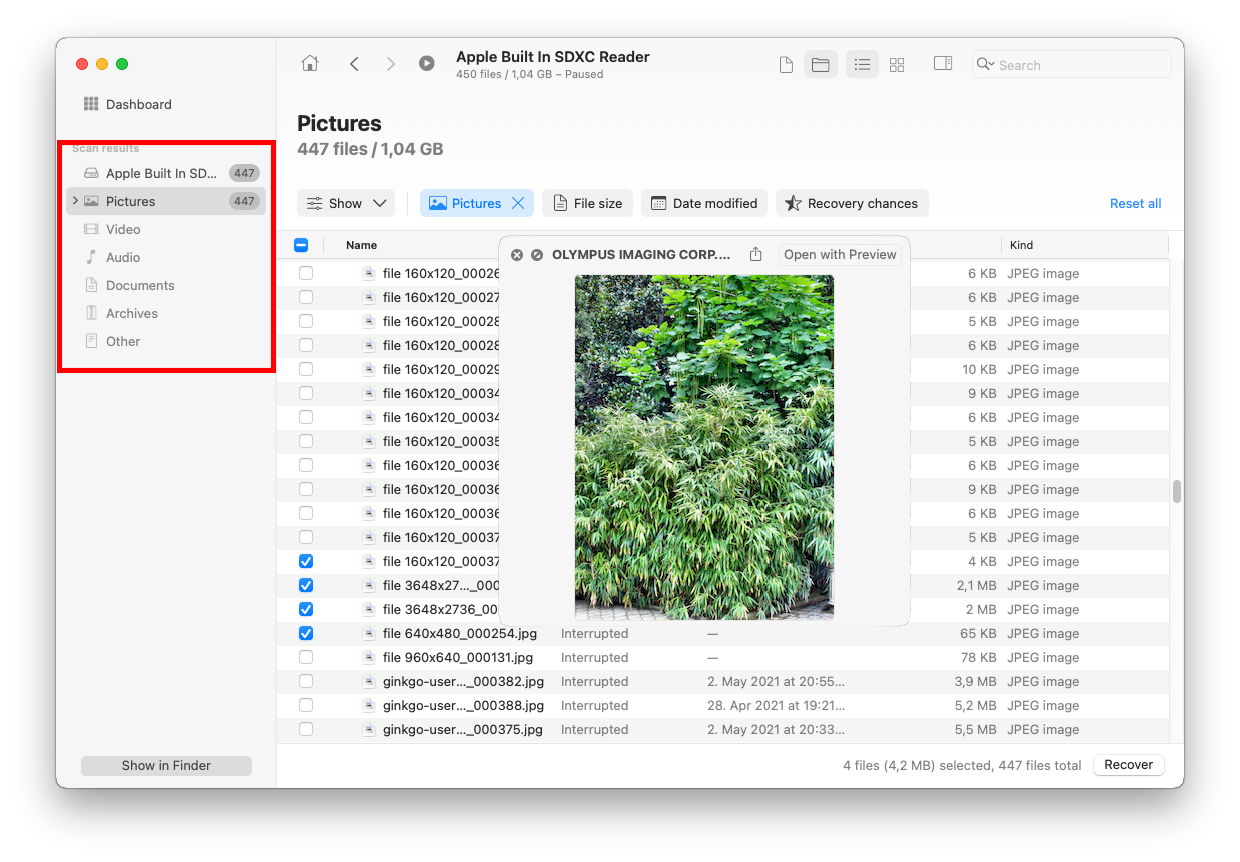
- Choose the files you want to recover and click the Recover button.
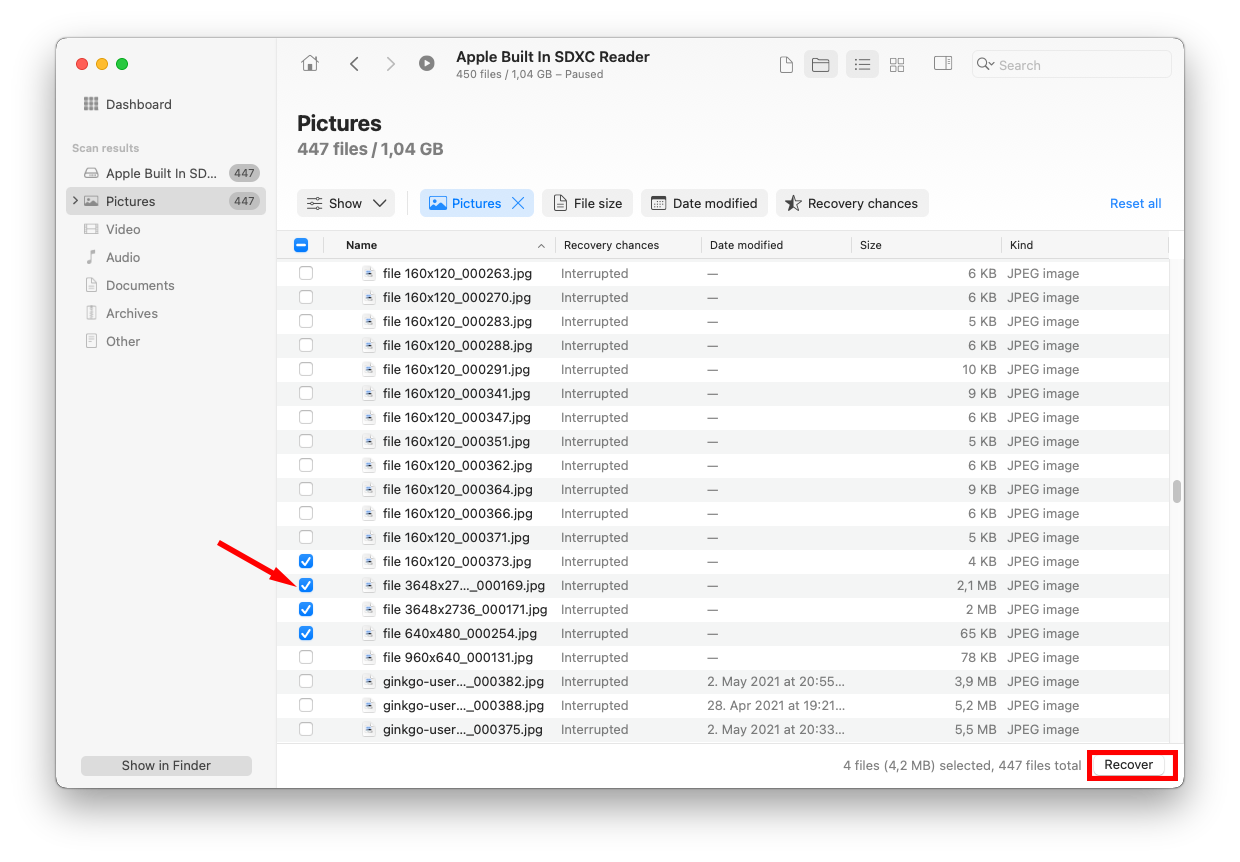
- Designate a new storage location at which to save them. Avoid using the original SD card or you risk overwriting the data you want to restore during the recovery process. Click Next button to complete the recovery procedure and restore the selected files to your new storage location.
Allow the application to complete its scanning procedures. You can pause the scan if needed and resume it at a later time. After performing the recovery with Disk Drill, you should have your valuable files back where you want them.
On Android Phones
Apps like DiskDigger can come to your aid if you need a data recovery tool that you can run directly on your Android phone. However, we recommend that you only rely on this solution if you can’t connect your card to your computer for any reason. After all, Android-built software offers more limited data recovery capabilities compared to desktop data recovery apps.
DiskDigger, in particular, is limited to scanning and recovering lost images and videos. Still, the app is a good option to have in urgent situations.
To recover deleted files from your SD card with DiskDigger, simply follow the steps below:
- Install DiskDigger from the Google Play Store.
- Launch the app. Then, select your SD card for a full scan.
- In the next menu, choose the file formats that you want DiskDigger to scan and find.
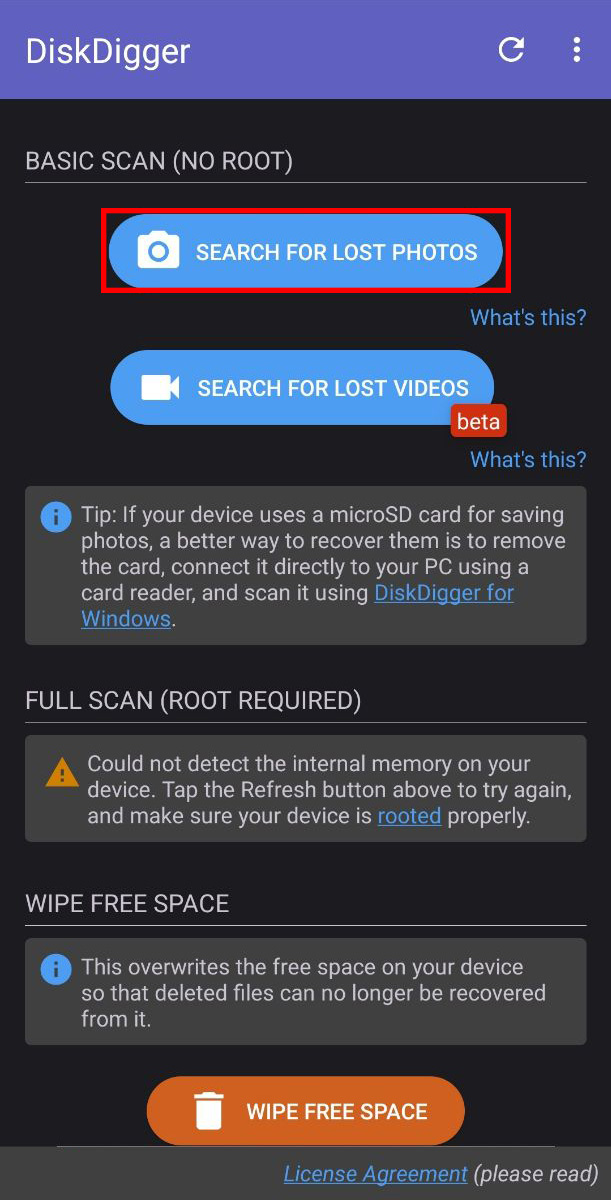
- Then, tap OK to start scanning your SD card.
- Once the scan has finished, you should see all the files it scanned. Select the ones you want to recover, and tap the Recover button.
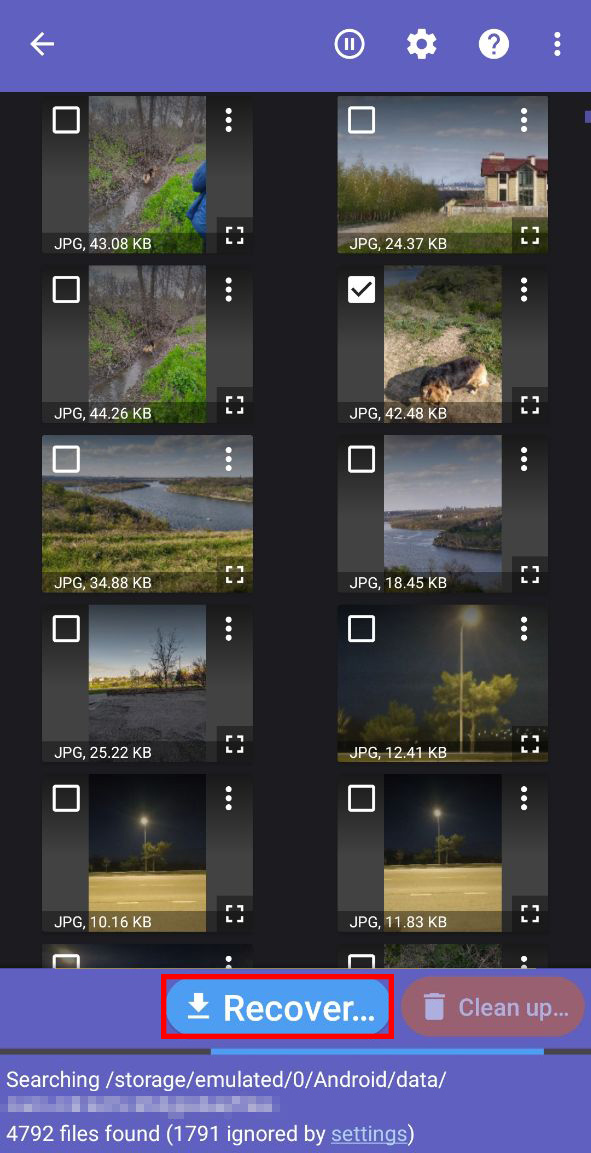
- You can choose to save your recovered files to a cloud service, to another location on your phone, or to upload your files to an FTP server. Tap your choice to save your files.
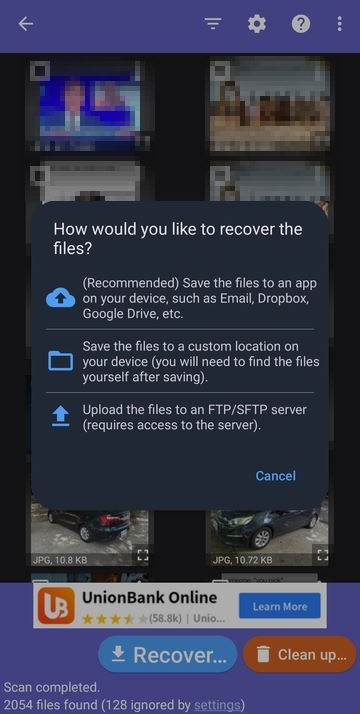
Remember that desktop data recovery software is still more powerful than this, especially for unrooted devices. For better results, the tool recommends you use the Pro version, combined with rooting your device.
How to Find Lost Files on an SD Card
It could be that the files or folders you are looking for are still there and you just missed them for some reason. Here are some common methods that may retrieve files to your memory card:
Use the Search Utility
Every digital device, including your computer, smartphone, digital camera, and tablet have the capacity to search the data in its storage. Take the time to carefully review the files that reside on your device. It is possible that you just missed the file previously or were looking for it under a different name. If you are lucky, the journey ends here with the discovery of the missing data.
You can also use the respective search functions’ advanced settings, where you can try to filter your search results by file formats, among others.
Enable Hidden Files to Be Displayed
Sometimes, when you connect the SD card to your computer, the OS may not be able to see the files. Perhaps they were hidden by a virus and all you need to do is to make them visible again. The specific details are dependent on your machine and operating system.
Hopefully, one of these techniques has worked and you have access to your files again. If not, move on to the next step to recover deleted data from an SD card.
On Windows:
- Open File Explorer
- Navigate to your folder. Then, select File on the main menu.
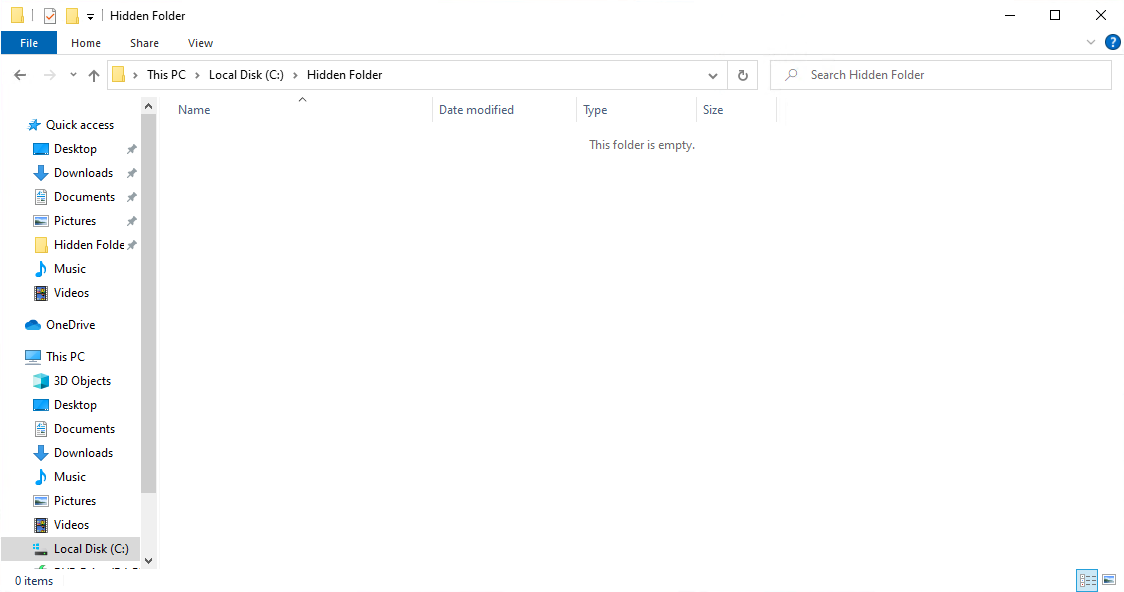
- Select Change folder and search options.
- Select the View tab on the Folder Options window
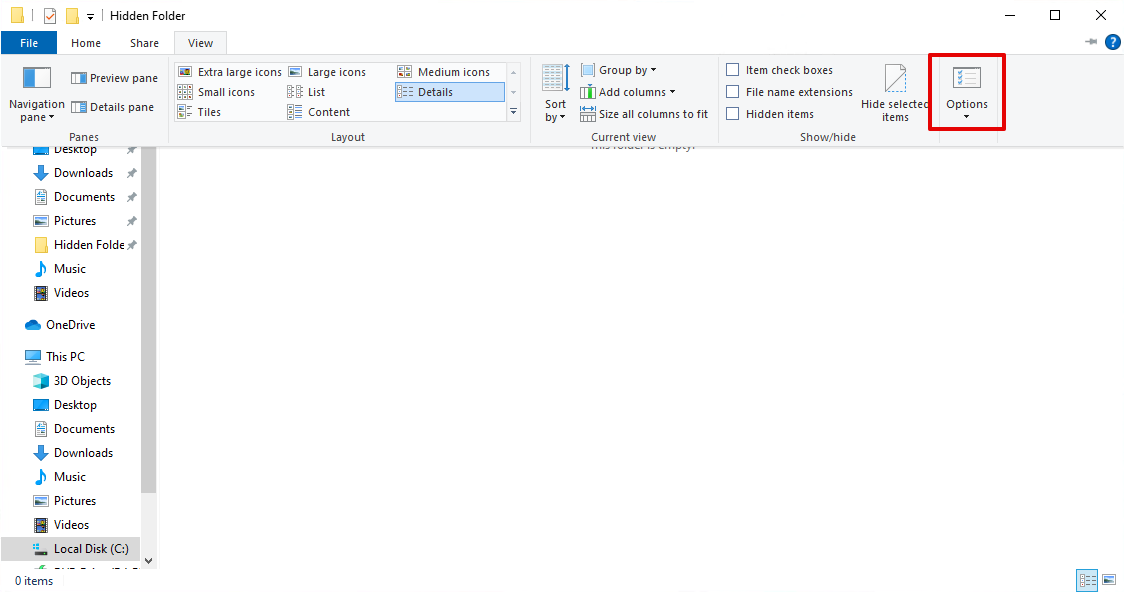
- Select Show hidden files, folders, and drives.
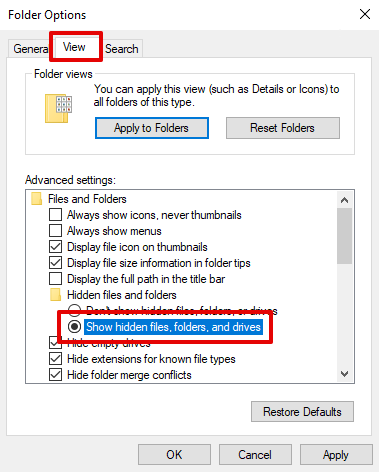
On Mac OS:
- Go to Finder and navigate to your folder.
- Press Command + Shift + . (the period key) to show hidden files in the folder.
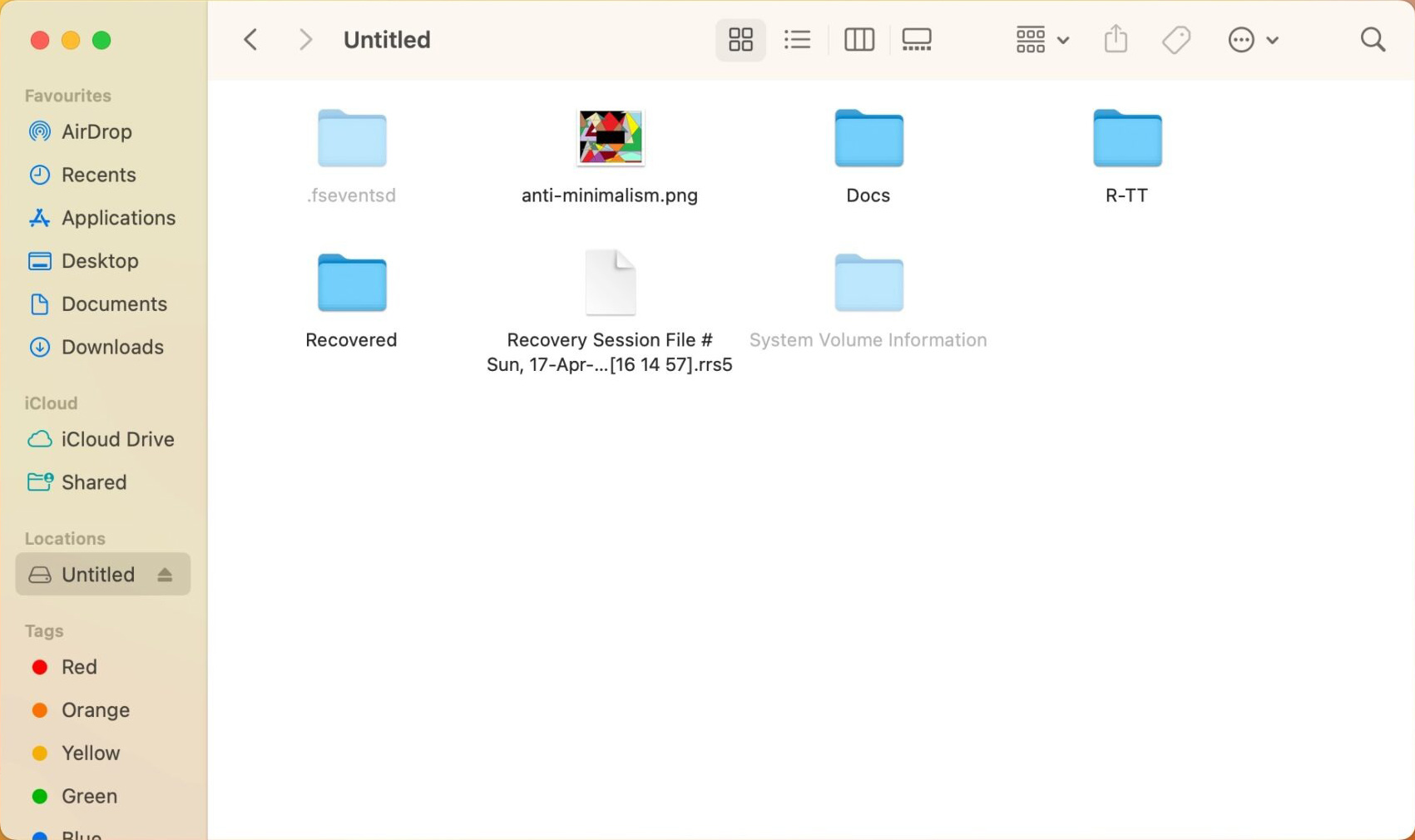
Unhide Files using Command Line Tools
Some deleted files may only be caused by being accidentally hidden. Luckily, there are commands you can run to change the attributes of files on Windows or Mac OS.
Unhide Files Using Command Prompt (Windows)
- Connect your SD card to your computer.
- Run Command Prompt as Administrator by searching from the Start Menu.
- In the command line, navigate to your SD card by typing the drive letter of your SD card and pressing Enter.
- Type
attrib -h -r -s /s /d *.*and press Enter. This command should remove hidden, read-only system attributes from all the files and folders on your SD card.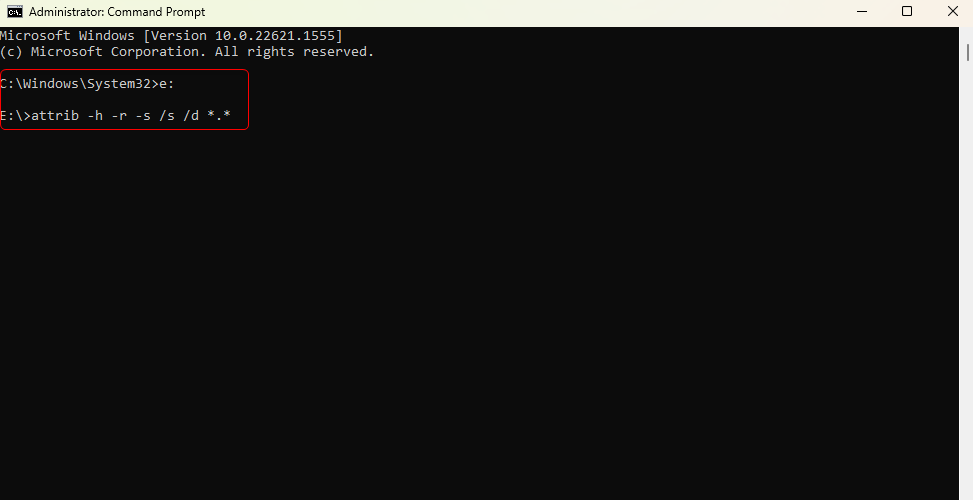
Once the process has finished, exit Command Prompt and browse through your SD card to check if your files have become accessible again.
Unhide Files Using Terminal (Mac OS)
- Connect your SD card to your computer and go to Applications > Utilities > Terminal or press Command+Space, then type Terminal and press Enter.
- Go to your SD card by typing the command and pressing Enter:
defaults write com.apple.Finder AppleShowAllFiles true
This action will unhide all files on your Mac.
- Type
killall Finder, then, press Enter. This will restart Finder making changes visible.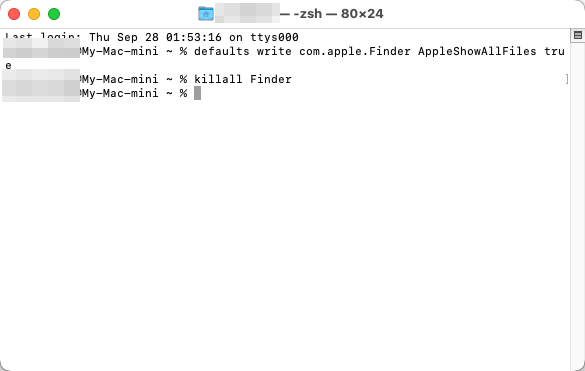
Note that the effectiveness of this method will vary depending on your user privileges. Sometimes, you might be greeted by a message saying “permission denied”, not allowing you to successfully unhide files from your SD card.
Conclusion
Knowing how to recover deleted files from an SD card can not only save you time but also lower the risk of losing important data from your storage device. With our simple and easy steps, you have an arsenal of ways to safely recover data all by yourself. Plus, the process works similarly even on other removable storage devices.
Just remember that the key to a successful data recovery is to recover your files as soon as possible and avoid writing new data to your SD card to avoid overwriting files.
FAQ:
- Incorrectly inserting or removing a card can result in damage. Cards are not meant to be handled roughly and you should never force a card into a slot.
- File system corruption can damage your card to the point that files may not be able to be recovered.
- Over time, bad sectors can accumulate, making it difficult to access the card’s data.
- Faulty formatting or interrupting the formatting process can damage the card.
- There is always the chance that you have obtained a defective card due to manufacturing problems.
- Malware can cause all sorts of damage to storage devices, and SD cards are no exception.
- Connect the SD card to a computer where you have installed Disk Drill.
- Consider creating a byte-level backup of the card using the software to protect the card from further damage during recovery.
- Launch the application and select the SD card from the disk list.
- Scan the card for files that can be recovered with Disk Drill.
- Preview the recoverable files and select those you want to be restored.
- Perform the recovery, saving the data to a new location to avoid file corruption.
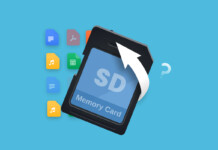
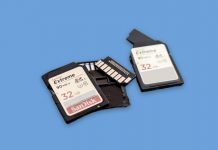
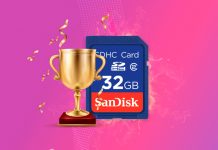
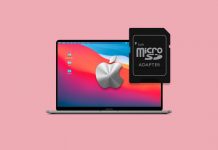
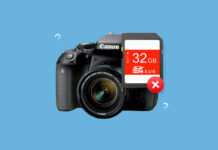
I had no idea it was possible to recover files from a formatted SD card! This guide was incredibly helpful. Thanks for including multiple methods.